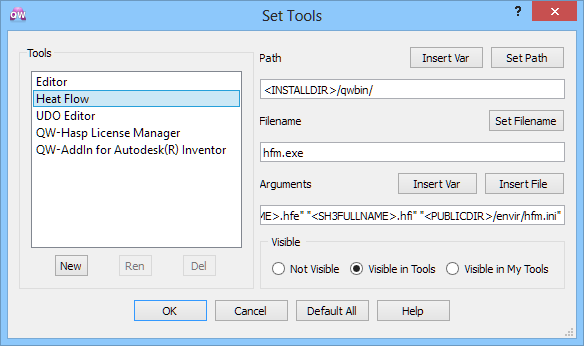
4.3.3 Running the QW-HFM module
As already said, the heat transfer analysis is done by internal or external module QW-HFM. In order to perform the analysis using the external module the user should specify the path to it. This is done in the Set Tools dialogue of QW-Simulator invoked via Tools-Set Tools command, shown in Fig. 4.3.3-1.
With these settings, and with Allow Heat flow option checked in QW-Editor, the QW-BHM module runs hfm.exe and passes three parameters: the full name for the *.hfe file containing the data on the initial temperature and enthalpy distribution, and the *.hfi file with the resulting enthalpy field which should be created by the external QW-HFM module and the full filename of the initialization file.
Users may modify the Set Tools settings according to their needs. First of all, some other application implementing specialised models may be invoked instead of hfm.exe. It is also possible to create a batch script, adding commands to save each *.hfi data file under a unique name in order to keep track of the evolution of the temperature field (other way to achieve this effect would be using the tasker file commands of QW-Simulator).
Fig. 4.3.3-1 Set Tools dialogue of QW-Simulator showing default settings for external QW-HFM.
The type of QW-HFM module (internal or external) can be chosen in Preferences dialogue in QW-Simulator (see Fig. 4.3.4-2) or by modifying the initialisation file (hfm.ini in the /envir installation subdirectory) manually (Solver option).